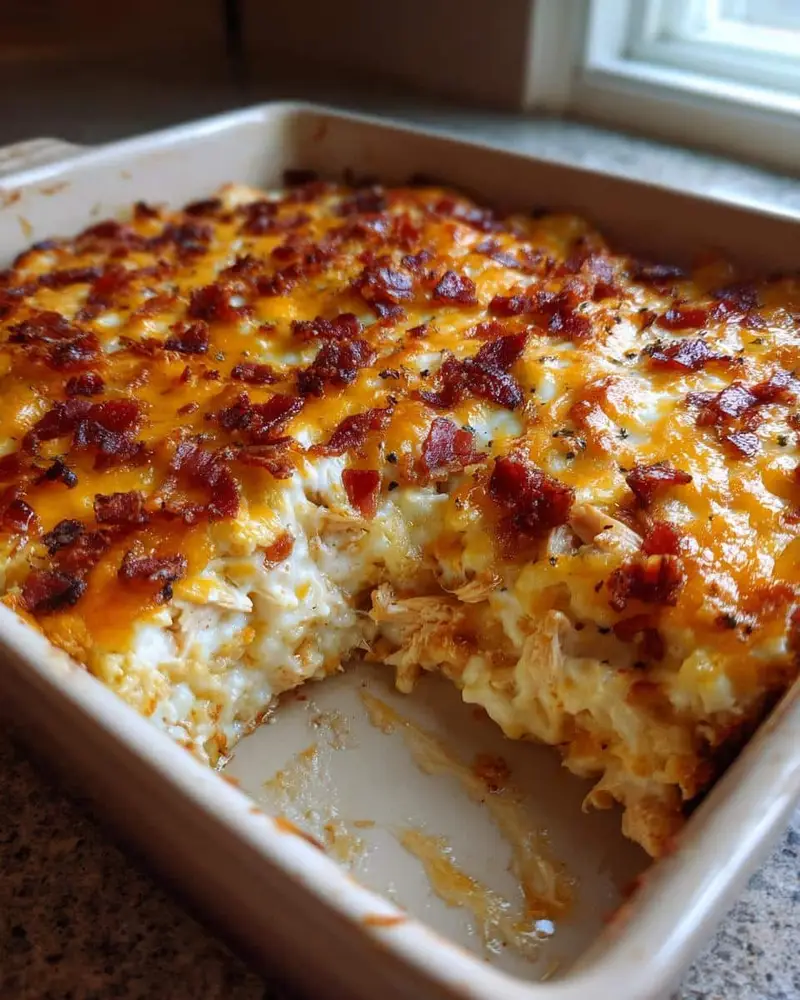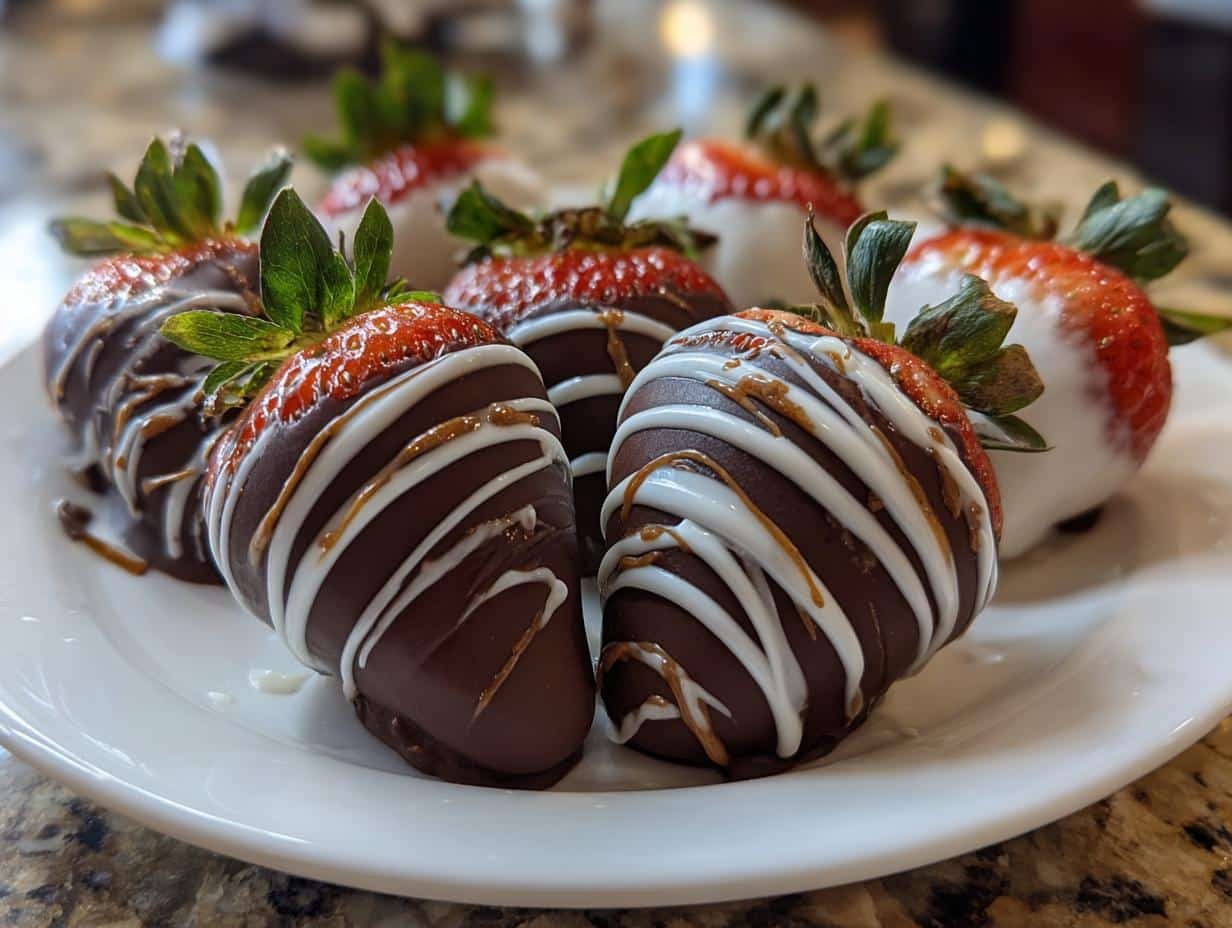In the world of desserts, few treats can stir up as much passion and debate as the humble brownie. From its rich, chocolatey texture to the endless variations that bakers around the globe have concocted, the brownie is a testament to the joy of baking and eating. Whether you’re a fan of the fudgy depths, the light and airy cakey heights, or the perfect balance of a chewy bite, there’s a brownie out there with your name on it. But, oh, it doesn’t stop there! The realm of brownies is vast and varied, with innovations like blondies, Nutella brownies, and even espresso infused delights. This article will take you on a delectable journey through the three main types of brownies, diving into their unique characteristics and how to bake them to perfection. So, preheat your ovens, and let’s get baking!
Part 1: Introduction to Brownies
Ah, brownies! Just the word itself can make mouths water and hearts flutter. This beloved dessert, known for its rich, chocolatey goodness, has a history as dense and complex as its texture. Originating from the United States in the late 19th century, brownies have evolved from a simple chocolate cake to include a myriad of variations that cater to every palate and preference.
The Universal Appeal of Brownies
Why do brownies hold such a special place in our hearts and stomachs? Well, for starters, they’re incredibly versatile. Whether you’re craving something sweet and fudgy or light and cakey, there’s a brownie out there for you. Plus, they’re a breeze to make. Even the most novice bakers can whip up a batch of brownies without breaking a sweat.
Brief History and Evolution
The first brownie recipes were a far cry from the varieties we know and love today. Initially, they were more of a molasses-flavored treat, but as chocolate became more widely available, it took center stage in brownie recipes. Over time, bakers began experimenting with the ingredients and baking techniques, giving rise to the three main types we’re familiar with: fudgy, cakey, and chewy brownies.
Each type has its legion of fans. Some swear by the dense, moist texture of fudgy brownies, while others prefer the lighter, airier feel of cakey brownies. Then there are those who walk the middle ground, opting for chewy brownies that offer the best of both worlds.
In essence, the journey of the brownie is a testament to the creativity and innovation of bakers everywhere. From its humble beginnings to its current status as a dessert staple, the brownie has proven time and again that it’s much more than just a treat—it’s a canvas for culinary expression.
So, whether you’re a die-hard fudgy fan or a cakey connoisseur, the world of brownies is rich with possibilities. Stay tuned as we dive deeper into each type, uncovering the secrets to baking the perfect brownie and exploring the delicious variations that have emerged over the years.
Part 2: The Three Main Types of Brownies
Diving into the heart of our chocolatey journey, we encounter the three pillars of the brownie world: fudgy, cakey, and chewy. Each type offers a unique texture and taste, catering to different preferences and occasions. Let’s unwrap these delicious mysteries and discover what makes each one special.
Fudgy Brownies
For many, the quintessence of a brownie lies in its fudginess. Fudgy brownies are the epitome of chocolate indulgence, boasting a dense, moist texture that melts in your mouth. The secret? A generous ratio of fat to flour. By upping the ante on butter and chocolate while keeping the flour at bay, fudgy brownies achieve their signature gooey interior.
Characteristics and Ingredients
A hallmark of fudgy brownies is their crackly top, which gives way to a rich, soft center. Essential ingredients include high-quality chocolate, butter, sugar, a touch of flour, and eggs—lots of eggs. The eggs act as an emulsifier, lending the brownies their dense structure.
Tips for Making the Perfect Fudgy Brownie
Achieving the perfect fudgy texture is an art. First, opt for melting chocolate instead of cocoa powder for a deeper flavor. Secondly, don’t skimp on the sugar; it’s crucial for that shiny crust. Lastly, be mindful of the baking time. Overbaking is the nemesis of fudginess, so pull them out of the oven when the center is just set.
Cakey Brownies
On the opposite end of the spectrum, we have cakey brownies. Light, airy, and tender, these brownies are for those who love a softer, more cake-like texture.
Characteristics and Ingredients
Cakey brownies owe their fluffy texture to a higher proportion of flour and the inclusion of baking powder, which gives them lift. Unlike their fudgy counterparts, cakey brownies often use cocoa powder, resulting in a milder chocolate flavor. The method of creaming the butter and sugar together introduces air into the batter, contributing to their lighter texture.
How to Achieve a Cake-like Texture
The key to perfect cakey brownies lies in the mixing process. Cream the butter and sugar until light and fluffy before adding the eggs one at a time. This technique ensures the batter is well-aerated. Additionally, sifting the dry ingredients helps avoid any lumps, ensuring a smooth, even texture.
Chewy Brownies
Striking a delightful balance between fudgy and cakey, chewy brownies are the best of both worlds. They feature a moist interior with a slightly crispy edge, offering a satisfying texture contrast.
The Balance Between Fudgy and Cakey
Chewy brownies achieve their texture through a careful balance of ingredients. A bit more flour than fudgy brownies, but less than cakey ones, and the use of both butter and oil, provides the chewiness. The oil keeps the brownies moist, while the butter adds flavor.
Key Ingredients for Chewiness
To nail the chewy texture, incorporate a combination of white and brown sugar. The molasses in the brown sugar contributes to the moisture and chewiness. Additionally, an extra egg white (without the yolk) helps bind the batter without making it too dense.
In the realm of brownies, whether you lean towards the dense and gooey, the light and airy, or somewhere in between, there’s a recipe out there waiting to be discovered and devoured. As we continue our exploration, we’ll delve into the myriad of variations that have emerged from these foundational types, proving that when it comes to brownies, the possibilities are as limitless as your imagination.
Part 3: Exploring Variations and Flavors

The adventure through the brownie universe reveals a spectrum of flavors and variations that go beyond the basic types. These creative twists not only add excitement to the traditional brownie but also cater to a wide range of taste preferences. Let’s dive into some of the most tantalizing variations that have captured the hearts of brownie lovers everywhere.
Classic Variations
- Blondies: Often referred to as the vanilla cousin of the traditional chocolate brownie, blondies swap out cocoa for brown sugar and vanilla, resulting in a rich, caramel-like flavor. These treats can be jazzed up with white chocolate chips or nuts, offering a delightful contrast to their dense, chewy texture.
- Nutella Brownies: For those who can’t get enough of the hazelnut-chocolate combo, Nutella brownies are a dream come true. Incorporating Nutella both in the batter and as a swirl on top, these brownies offer an intensely flavorful experience, with the hazelnut spread adding a luxurious richness.
- Peanut Butter Brownies: Marrying the beloved duo of chocolate and peanut butter, these brownies feature either a swirl of peanut butter through the batter or a layer of peanut butter frosting on top. The result is a decadent treat that perfectly balances the sweetness of chocolate with the savory depth of peanut butter.
Red Velvet Brownies
- Espresso Brownies: A dash of espresso powder deepens the chocolate flavor, adding a sophisticated twist to the classic brownie. These are perfect for coffee lovers, providing a subtle caffeine kick that complements the chocolate’s richness.
- Mint Chocolate Brownies: Combining the refreshing zing of mint with the decadence of chocolate, these brownies are a cool, invigorating treat. A layer of mint frosting beneath a chocolate glaze makes them an irresistible choice for those who love this classic flavor pairing.
- Caramel Brownies: Featuring layers of gooey caramel within and atop the brownie, these are a caramel lover’s paradise. The smooth, sweet caramel not only adds a layer of flavor but also an enticingly sticky texture that makes each bite a delight.
Slutty Brownie Recipe – Ultimate Guide to Layered Dessert Bliss
- Double Chocolate with White Chocolate Drizzle: For the ultimate chocolate experience, these brownies combine a rich, fudgy base with a generous drizzle of white chocolate on top. The contrast between the dark and white chocolate not only adds visual appeal but also a delightful variation in taste.
- Fudge Walnut Brownies: A classic variation, these brownies are packed with crunchy walnuts, offering a nutty flavor and a contrasting texture to the dense, chocolate base. Whether you’re a nut lover or simply seeking a twist on the traditional brownie, this version is sure to satisfy.
- Fudge Iced Brownies: Elevating the sweetness, these brownies are topped with a layer of smooth, chocolate fudge icing. The icing adds an extra layer of decadence, making them a perfect choice for those with a serious sweet tooth.
In the vast world of brownies, these variations represent just the tip of the iceberg. Each type and flavor offers a unique taste experience, inviting bakers and eaters alike to explore and enjoy the boundless possibilities. As we continue our journey, we’ll uncover essential baking tips and techniques that will help you master the art of brownie making, ensuring that your next batch is nothing short of perfection.
Part 4: Baking Tips and Techniques
Mastering the art of brownie baking is not just about following a recipe to the letter; it’s about understanding the nuances that can turn a good brownie into a great one. Whether you’re aiming for fudgy, cakey, or chewy brownies, or experimenting with one of the many delicious variations we’ve explored, these tips and techniques will help ensure your success.
Baking Perfect Brownies
- Importance of Quality Ingredients: The foundation of a great brownie lies in the quality of its ingredients. Opt for high-quality chocolate and cocoa powder, as they are the heart and soul of your brownies. The better the chocolate, the more decadent your brownies will be.
- Mixing Techniques to Avoid Overmixing: Overmixing the batter can lead to tough, dense brownies due to the development of gluten. To avoid this, mix your ingredients until just combined. If adding mix-ins like nuts or chocolate chips, fold them in gently with a spatula.
- Baking Times and Temperatures: Each type of brownie has its ideal baking time and temperature. Fudgy brownies benefit from a slightly lower temperature and shorter baking time to preserve their moistness, while cakey brownies may require a bit longer in the oven to achieve their lighter texture. Always use an oven thermometer to ensure accuracy, and start checking for doneness a few minutes before the recipe suggests, as oven temperatures can vary.
Achieving the Perfect Texture
- Testing for Doneness: Unlike cakes, brownies are trickier to test for doneness. The toothpick test should come out with a few moist crumbs attached, not completely clean. This indicates that the brownies are cooked through but still moist in the center.
- Cooling Before Cutting: Patience is a virtue, especially when it comes to brownies. Allowing your brownies to cool completely in the pan will help them set and make cutting cleaner and easier. If you’re in a rush, chilling them in the refrigerator can speed up the process without compromising the texture.
- Slicing Like a Pro: For clean, precise cuts, use a sharp knife and clean it between slices. Dipping the knife in hot water and wiping it dry before each cut can also help achieve perfect squares.
Experimenting with Flavors and Add-Ins
- Customizing Your Brownies: Don’t be afraid to get creative with your brownies. Mix-ins like nuts, dried fruit, or candy pieces can add texture and flavor. Swirls of caramel, peanut butter, or cream cheese can elevate the taste and make your brownies stand out.
- Adjusting Recipes to Suit Your Taste: Baking is as much an art as it is a science. Feel free to tweak recipes based on your preferences. If you prefer your brownies less sweet, consider reducing the sugar slightly. Love intense chocolate flavor? Add a bit more cocoa powder or chocolate chunks.
With these tips and techniques in your baking arsenal, you’re well on your way to creating brownies that will impress and delight. Remember, the best brownies are the ones that bring you joy, whether you’re savoring them solo with a glass of milk or sharing them with friends and family. Stay tuned for our final thoughts and a wrap-up of our brownie exploration journey.
Part 5: FAQs
In our journey through the delicious world of brownies, we’ve uncovered the secrets to their types, variations, and the art of baking them to perfection. Yet, the quest for brownie mastery doesn’t end here. Many enthusiasts have burning questions that can further enhance their baking experience. Let’s tackle some of the most frequently asked questions about brownies, providing clarity and tips to ensure your next batch is even better.
What Makes a Brownie Fudgy vs. Cakey?
The battle between fudgy and cakey brownies boils down to the ratio of fat (butter and chocolate) to flour. Fudgy brownies have more fat and less flour, giving them a dense, moist texture. Cakey brownies, on the other hand, have a higher proportion of flour and often include a leavening agent like baking powder, resulting in a lighter, airier texture. The amount of eggs and the type of sugar can also influence the texture, with more eggs contributing to a richer texture and brown sugar adding moisture and chewiness.
Can I Add Mix-ins to Any Brownie Recipe?
Absolutely! Mix-ins are a fantastic way to customize your brownies and add an extra layer of flavor and texture. Whether it’s nuts for a crunchy contrast, chocolate chips for double the chocolate goodness, or swirls of caramel for a sweet surprise, you can add mix-ins to any brownie recipe. Just be mindful of the quantity—too many mix-ins can affect the brownies’ structure and baking time.
How Do I Know When My Brownies Are Perfectly Baked?
Determining when brownies are perfectly baked is a fine art. Unlike cakes, you don’t want a skewer to come out clean. Instead, look for a few moist crumbs when you insert a toothpick into the center. The edges should be set and slightly pulling away from the pan, but the center should still be soft (but not liquid). Remember, brownies will continue to cook slightly from residual heat after being removed from the oven, so err on the side of underbaking rather than overbaking for that perfect moist texture.
Part 6: Conclusion
Wrapping up our comprehensive guide to brownies, we’ve ventured from the basic types to the most innovative variations, armed with baking tips and answers to your most pressing questions. The world of brownies is vast and varied, offering endless possibilities for creativity and indulgence. Whether you’re a fan of the classic fudgy brownie, prefer the lightness of cakey brownies, or enjoy exploring the myriad of flavors and textures in between, the perfect brownie is waiting for you to bake it.
Remember, the key to great brownies lies not just in following recipes but in understanding the principles that make them work. Quality ingredients, the right techniques, and a bit of creativity can transform simple components into a treat that delights the senses. So, preheat your oven, gather your ingredients, and embark on your next baking adventure with confidence.
We invite you to share your brownie creations and discoveries. What’s your very favorite type? Have you experimented with any unique variations or flavors? The journey of exploring and enjoying brownies is one best shared with fellow enthusiasts. Happy baking!
LSI and NLP Keywords
- Types of brownies, fudgy, cakey, chewy, blondies, Nutella, peanut butter, espresso, mint chocolate, caramel, double chocolate, white chocolate drizzle, baking tips, quality ingredients, mixing techniques, baking times, baking temperatures, dessert recipes, chocolate desserts, gourmet brownies.
Recommended External Links
- National Confectioners Association – Anchor text: “The history of chocolate desserts”
- King Arthur Baking – Anchor text: “Baking techniques for perfect desserts”
- The Food Network – Anchor text: “Innovative dessert recipes”



